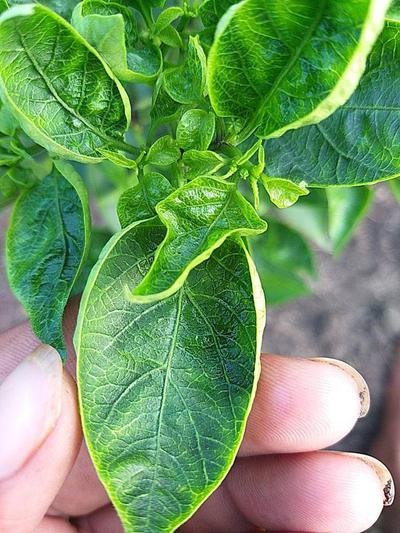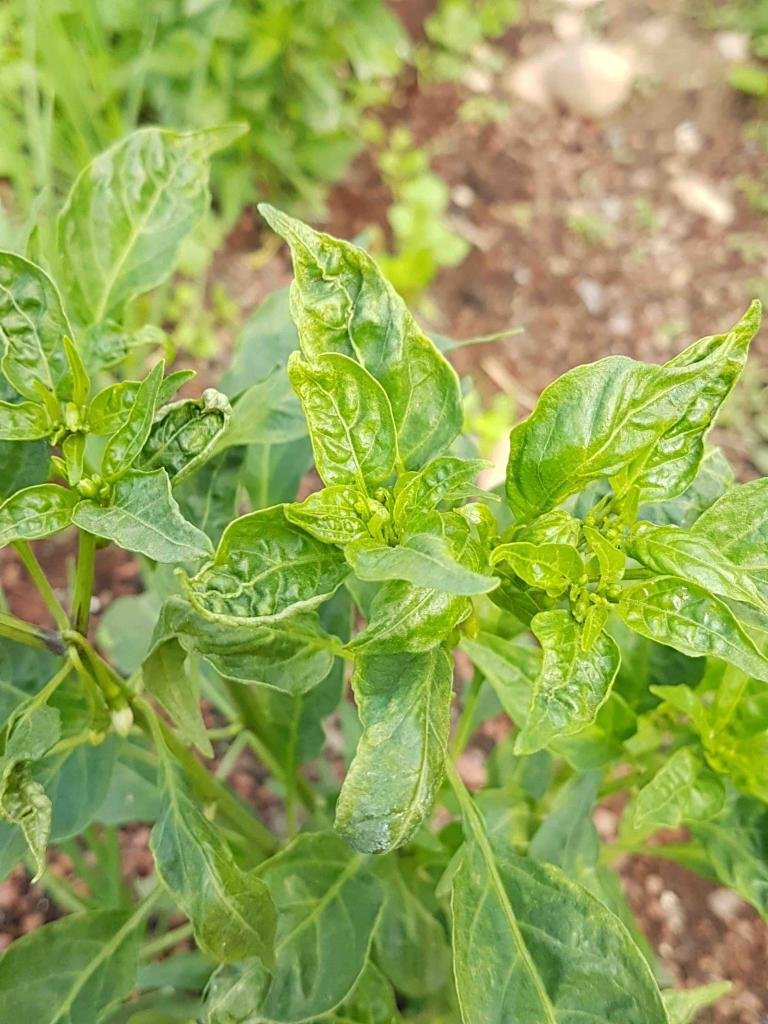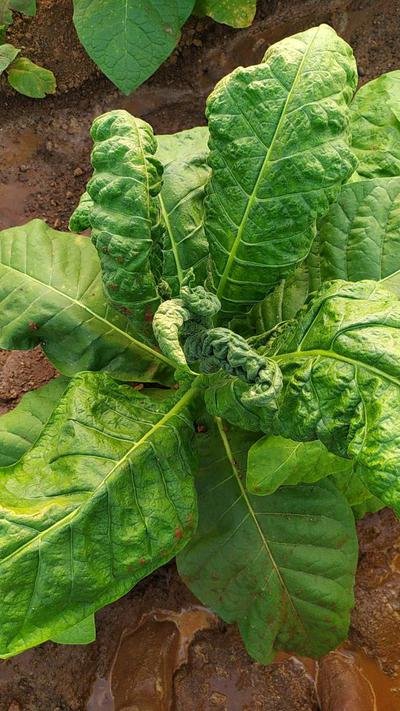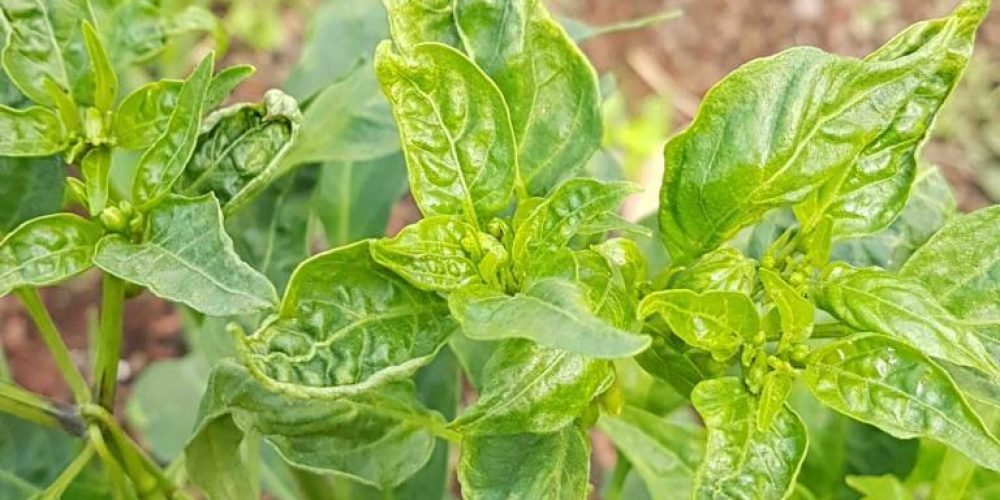Leaf curl and curl virus on pepper
- Overview
You can notice the symptoms of the disease when a wrinkle appears
And wrap the ends of the leaves towards the top.
As well as yellowing of the veins.
Small size of leaves.
Then the old leaves become leathery and brittle.
The plant becomes stunted.
Fruit clusters are small in size.
- Symptoms
Symptoms of leaf curl virus on pepper appear in the form of curling and curling of the tips of the leaves upward. As well as yellowing of the veins. Small size of leaves. In addition, leaf veins become swollen, resulting in shortened leaf petioles and axillary buds. Then the old leaves become leathery and brittle. If plants are infected during the early season, their growth will be stunted resulting in a significant reduction in yield. Fruit morphology in susceptible varieties becomes rudimentary and distorted. The virus causes symptoms similar to damage caused by thrips and mites.

Pepper leaf curl virus
- From organic control
Controlling whitefly populations reduces the spread of the virus. You can use neem oil or petroleum based oils. Make sure the oils completely cover the plants, especially the undersides of the leaves, where whiteflies are mostly found. Whiteflies can generally be controlled by natural enemies such as aphids, big-eyed bugs, and minute pirate bugs.
- Chemical control
Always consider an integrated approach with preventive measures together with biological treatments if available. There are no known effective methods to prevent or reduce the presence of leaf curl virus on pepper. Use chemical control methods, such as imidacloprid or dinotefuran. Spray seedlings with imidacloprid or lambda cyalothrin before planting to control vectors. But remember that excessive use of pesticides will harm beneficial insects, and also make many whitefly species resistant to pesticides. To prevent this from happening, ensure proper rotation of insecticides and use only selective pesticides.
- Cause of disease
The symptoms are caused by begomovirus, which is transmitted primarily by whiteflies in a persistent manner.
These wings are 1.5 mm long and are waxy white with a pale yellow body and are often found on the underside of leaves. The spread of the disease depends on the wind condition, which will indicate how far the whitefly can spread.
 Whiteflies are the biggest problem mid to late season.
Whiteflies are the biggest problem mid to late season.
Because this disease is not seed-borne, the virus persists by infecting alternative hosts (eg, tobacco, tomatoes, and weeds).
An additional factor that can lead to the development of the disease is late rainfall
Season, planting of infected seedlings and presence of weeds. In nurseries, pepper plants are most susceptible to infection during the seedling and vegetative stages.
- Preventative measurements
- Use disease-resistant species of plants, and extract seeds only from virus-free plants.
- You should also plant at least two rows of a barrier crop such as corn, sorghum or millet
Around the pepper fields.
- Control whitefly numbers and protect seedlings from them in particular by creating nets
Nylon over plants during the nursery period.
- You should also monitor the field regularly to detect early infestations by looking for symptoms such as curled leaves and stunted growth.
- Place a number of traps or yellow sticky leaves in your field, which will attract whiteflies.
- Control insect vectors of the virus by planting seedlings under mesh nozzles, which can
Also to prevent whiteflies from attacking seedlings.
- You must also ensure that the field and its surrounding areas are free of harmful weeds.
- Collect and destroy infested plants early by burning them, practicing deep plowing, or burning all plant debris after harvest.
- Encouraging beneficial insects by planting different crops in the same season.




